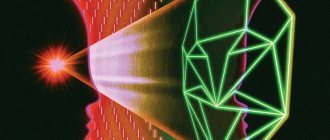Depth psychology is (briefly). The founder of the basic principles of psychoanalysis was the Austrian psychiatrist and specialist in the field of psychology Sigmund Freud (1856–1989). Unlike representatives of such movements as behaviorism and Gestalt psychology, adherents of psychoanalysis were not intended to use the exact and natural sciences as an example for creating scientific and psychological knowledge.
Freud tried to fill mental knowledge about a person with the latest relevant truth, form a concept and, on its basis, acquire the data necessary to obtain answers to practical, and primarily psychotherapeutic questions.
The term psychoanalysis has three meanings:
- Personality theory of psychopathology;
- Method of treating personality disorders;
- The method of unconscious thoughts and feelings of an individual.
This combination of theory with human personality therapy connects all ideas about the behavior of an individual. First, let's look at Freud's views on the organization of the psyche - a topographical model of levels of consciousness. According to this model, there are three levels of consciousness:
- Consciousness;
- Preconscious;
- Unconscious.
Let's look at Freud's views on the model of levels of consciousness.
The level of consciousness consists of sensations and experiences that a person experiences at the moment. The area of the preconscious includes experiences that are not currently recalled by memory.
It is worth noting that the preconscious is a bridge between the conscious and unconscious.
The unconscious is the most significant area of the mind. It represents a repository of instincts, emotions and memories that were repressed from consciousness for certain reasons (stress, psychological trauma).
The area of the unconscious determines our behavior.
The concept and essence of psychoanalysis
Psychoanalysis refers not only to a type of psychotherapeutic and medical practice. At the same time, it is also a philosophical theoretical position about man, a social philosophical movement related to the conditions of the ideological regime. Directly in this sense, psychoanalysis has become a component of Western culture. And as Berger once argued: “If Freud had not existed, he would have had to be invented.”
Psychoanalysis, translated from Greek, means (psyche - soul + analysis - dismemberment), is part of psychotherapy, a medical method of study formed by S. Freud for the purpose of diagnosing and treating neuroses. After which this method was converted by Freud into a psychological theory of a philosophical nature, aimed at studying the secret relationships and foundations of people’s mental life. This concept is created on the basis of the hypothesis that the famous set of pathological views, especially of a sexual nature, is “expelled” from the realm of reason and subsequently functions from the realm of the unconscious, and under the guise of various guises and vestments enters consciousness and threatens the internal unity of the “I.” ", introduced into the world around him.
Adherents of psychoanalysis attribute basic significance to sexual desire, considering the mental life of people in full, as the area of primacy of unconscious sexual aspirations for pleasure or displeasure.
Based on what was written above, we can say that psychoanalysis can be analyzed at three levels:
- As a way of psychotherapy.
- As a way to study personal psychology.
- As a concept of scientific knowledge about understanding the world, philosophy and psychology.
Formation and development
The beginning of the development of depth psychology can be indicated by the publication of Sigmund Freud’s book “The Interpretation of Dreams.” This event dates back to 1900. In his further works, he argued that consciousness is a thin film that hides the enormous contents of the unconscious. Because of this, any scientist who does not try to study what is hidden will receive a minimal amount of information about the individual.
Many psychologists continue to try to decipher dreams. They are sure that these are encrypted messages from the unconscious. After Freud, Jung developed depth psychology. He made a great contribution to the development of analytical areas of psychological science.
Adler laid down the postulates of individual psychology. He said that any child after birth feels inferior. The baby is trying to compensate for what is missing. Gradually, unconscious life principles appear, which often lead to the appearance of mental disorders.
Key concepts of the concept
It has been established that the main regulator of human behavior is consciousness. Freud discovered that behind the shell of reason there is hidden a deep “seething” layer of powerful aspirations, desires, and lusts that the individual does not realize. As an attending physician, he realized that these unconscious worries and arguments have every chance of seriously burdening life, including being the cause of a neuropsychological disease. All this sent Freud to search for means of freeing his patients from the incidents that occur between what their reason dictates and their hidden, unseen, unconscious impulses. Thus, the Freudian method of healing the soul, called psychoanalysis, was born.
Key concepts of the concept
S. Freud analyzes the organization of psychological existence in the form of a model that has its own elements, representing various psychological authorities, marked by the definitions: It (id), I (ego) and super-ego (superego).
It (id) is a simpler stage, it includes everything, without exception, that is given from birth at the genetic level, subject to the principle of pleasure and understanding absolutely nothing about reality and the surrounding society. Its conditions must be fulfilled by the I (ego) level.
I (ego) is necessary for the principle of reality, developing several elements that allow one to adapt to the environment and overcome its conditions. I (ego) is a mediator among stimuli coming directly from both the given environment and from the depths of the organism, on the one hand, and counter motor interactions on the other. The tasks of the I (ego) include: self-preservation, recalling the acquired skill of external influences in memory, avoiding threatening influences on the body, monitoring the conditions put forward by instincts coming from the It (id).
A special role was given to the stage of the super-ego (super-ego), which was assigned the place of the basis of moral and religious feelings, exercising control and playing the role of a punitive agent. If the It (id) is predetermined at the genetic level, and the I (ego) is the product of a personal skill, then in this case the super-I (super-ego) is the product of influences emanating from other people. It appears at the stage of early childhood - is associated, according to Freud, with the Epidov complex and remains almost constant over subsequent years. The super-ego is formed as a result of the mechanism of establishment on the basis of the coincidence of the characteristics of the father and the child, the purpose of which is to be a model.
If the I (ego) decides or takes an action in order to satisfy the It (id), but goes against the super-I (super-ego), then in this case the It (id) will feel punishment in the form of remorse, a feeling of guilt. Since the super-ego receives energy from the id (id), since the super-ego often functions ruthlessly. From efforts experienced under pressure of various powers, the I (ego) with the help of “safety mechanisms” is saved. Such fuses include: repression, regression, rationalization, sublimation and others. Desires strive for release, however, achieving satisfaction is unlikely.
Types of psychological defenses
Repression (suppression) is one of the elements of psychological protection, the role of which is to motivate the elimination of something from the mind. Moving to the area of unconscious feelings, thoughts, desires for action cause behavior to influence it, to feel a sense of anxiety.
Sublimation is an element with the help of which forbidden sexual desire moves towards non-stimulating objects; discharge occurs in the form of activity or work that is optimal for a person and society. As Freud believed, this is the most productive method of functioning of an individual. The creative process is a type of sublimation.
Regression is a backward movement, a safety system, which is a certain form of psychological adaptation in conditions of conflict or anxiety, in the event that an individual unconsciously leans towards the earliest, less mature and less appropriate standards of behavior, which, from his point of view, look guaranteeing protection and safety.
Substitution is also a psychological defense mechanism; the goal is to replace the object to which feelings are oriented. If emotional expression in relation to a given subject poses a threat, then the replacement mechanism is activated. For example, anger directed towards the weakest and most defenseless individual.
Projection is the appropriation to others of one’s own usually criminal lusts, ideas, themes, motives, feelings, character traits, etc., thinking that he received and perceived it not within himself, but somewhere outside. (“It is impossible to trust more than one person,” says a person who does not always act honestly and decently in his own actions”).
Rationalization - allows a person to find justification for unacceptable aspirations for him, however, desires, aspirations, feelings and motives that exist for him. The desire to find a socially approved justification for them.
Isolation is a protective mechanism whose task is to remove psychological anxiety and experiences from consciousness, however, while maintaining its perception.
It is understood that in psychodynamic therapy, the safety (protective) system distorts reality, however, it is highly functional and necessary, since it is capable of eliminating conditions of a traumatic nature from the mind for some time. But if its elements become too rigid and hard, they can cause difficulties in the formation, development and adaptation of the individual.
Methods and theories
To get to the unconscious, modern psychiatrists use two techniques:
- Study of dreams. During sleep, the brain sends signals to a person about his hidden problems. The state of sleep allows the body to relax, which helps thoughts come without difficulty. They come in an incomprehensible form that needs to be deciphered. In fact, there is a separate branch of psychology that studies dreams and explains the signs that people see while in their dreams.
- Free association technique. Initially, the patient should make himself more comfortable in front of the psychologist and tell him everything that he has accumulated on an exciting topic. The conversation should start with small things, slowly approaching important points. Gradually, the patient will involuntarily talk about the reasons for the occurrence of negative situations and internal conflicts. After the story, the psychologist explains to the person what he told, clarifies controversial and interesting points.
The point of these techniques is to deal with a person’s internal problems, to help him cope with his experiences.
Depth psychology combines many areas of psychological science that study the unconscious, hidden beyond the boundaries of consciousness. Over time, effective techniques have emerged that help psychologists improve the psychological state of people.
Instinct and human behavior
Freud focused on two instincts that influence behavior: self-preservation and sexual desire, which guarantees the preservation of the species, and not just the individual. Sexual desire was elevated by S. Freud to a system of basic principles that does not allow for objections and was called libido. The unconscious was interpreted as the area of filling the energy of attraction of an invisible instinct, which does not understand absolutely anything other than the principle of pleasure received by the individual during the discharge of this energy. The oppressed, suppressed libido was decoded by Freud, according to the associations of his patients, independent of the control of reason. He called such decoding psychoanalysis. Studying his own dreams, Freud came to the conclusion that they are nothing more than a “scenario” that seems absurd, but carries a code of hidden desires, satisfied in images - signs of a given form of night existence.
Instinct for self-preservation
During the hostilities of the First World War, Freud makes amendments to his own instinctual scheme. Along with sexual desire in the individual’s psyche, there is a desire to commit suicide (Tonatos, as the opposite of Eros); according to Freud, this instinct also contains self-preservation. Under the name Tonatos there was not only a special desire for one’s own death, but also the death of others, namely the presence of aggression and the desire to kill, which was elevated to the category of a famous biological desire inherent in a person by nature.
Applying the definitions of the energy approach, Freud emphasized two conditions for the appearance of neurosis - libido, as the basic law, and unrest of an infantile nature. Freud described five stages of psychosexual formation, any of which can be a premise for fixation.
Depth psychology
Depth psychology (German: Tiefenpsychologie) is a general name for a number of areas in psychology, focused primarily on the study of unconscious mental processes.
The concept of “dynamic psychology” or “psychodynamic approach” is often used as a synonym for the concept of “depth psychology”, although the term “dynamic” denotes only a special case of a deep approach (along with economic and topographical), which describes mental phenomena not in a static, but in a dynamic way aspect - as a result of the collision and addition of unconscious drives.
The credit for introducing the concept goes to the Swiss psychiatrist E. Bleuler, who worked closely with S. Freud. Through joint research, the authors laid the foundation for the study of mental phenomena through the prism of the unconscious. Psychoanalysis became the leading direction of depth psychology, from which numerous directions and currents later sprang off.
“In assessing our reasoning about the drives towards life and death, it will not hinder us much that we encounter here so many strange and hidden processes, such as, for example, the fact that one drive is repressed by another or it turns from the “I” to the object, etc. "This happens only because we are forced to operate with scientific terms, that is, the specific figurative language of psychology (more correctly, depth psychology - Tiefenpsychologie)." (S. Freud, 1920)
““Depth psychology” is a concept that arose in modern medical psychology (E. Bleuler), and denotes that psychological science that deals with the phenomena of the unconscious.” (C.G. Jung, 1951)
In addition to S. Freud's psychoanalysis itself, depth psychology also includes analytical psychology (C. G. Jung), individual psychology (A. Adler), neo-Freudianism (K. Horney, E. Fromm, G. Sullivan, etc.). Within modern psychoanalysis, the following main deep theories are distinguished: the psychology of drives, the theory of M. Klein, Ego psychology, psychoanalytic theory of development, the theory of object relations, psychology of the self.
The main alternative to depth psychology is cognitive behavioral therapy and the behavioral approach. It is important to pay attention to two circumstances: 1) the deep is not a synonym for the more true and real; it is often a synonym for the invented and vaguely half-thought-out. The most effective things are simple things, and specialists begin to think about the deep when they are not fully competent and do not know what to do... 2) the cognitive and behavioral approach is no less profound than the dynamic approach, but its depth lies in something else: in the depths of the layers that It is possible to change the client using seemingly fairly simple methods. Changing not only the client’s habits (although these are already fundamental changes!), but changing the philosophy of his life - such changes are truly profound and fundamental.
Sources
- Freud Z. Psychology of the unconscious. Translation with him. A.M. Bokovikov. - M., 2006
- Laplanche J., Pontalis J.-B. Dictionary of psychoanalysis. M., 1996
- Rycroft Ch. Critical Dictionary of Psychoanalysis. - St. Petersburg, 1995
- Psychoanalytic terms and concepts: Dictionary/Ed. Borness E. Moore and Bernard D. Fine / Translation from English. A.M. Bokovikova, I.B. Grinshpun, A. Filts. - M., 2000
Stages of psychosexual theory
- Oral stage (from 0 to one and a half years). It got its name due to the fact that the mouth is considered the main sensory organ of a child during a given period of time. Directly with its help, he not only saturates his body, but also gets to know the world around him, feels a lot of pleasant feelings for him. This stage is the period of formation of sexuality. The result of fixation is the acquisition of a feeling of pleasure during smoking, sarcasm. In addition, there is oral hostility, a feeling of dependence on others.
- Anal stage (from 1.5 to 3 years). During this period, the baby’s parents begin potty training the baby. Freud believed that the child gains enormous pleasure from actions associated with defecation, namely because he is able to control such a serious procedure without the help of others. The child experiences sexual pleasure from the ability to control muscles. Fixation in this case can be of two types:
- in the first case - a tendency to destruction, suppression of impulses, frugality, stinginess;
- in the second - disagreement, rage, hostility, rebellion.
- Phallic stage (from 3 to 6 years). Detection of the presence or absence of the penis. The erogenous area is the genitals. The emergence of emotions against the background of conflict - Epidov (Electra) complex. In addition, when a female child discovers the absence of a penis, it leads to a feeling of envy of boys, a desire to have a penis arises (the attraction of girls to their father is based precisely on this), shifting the blame onto the mother due to the lack of a penis. This stage is considered more fundamental for the development of mental disorders.
- Latent stage (from 6 to 12 years). Sexuality is not expressed in any way. Views aimed at social activity and standards of life are formed.
- Genital stage (puberty). Understanding gender. The goal of the teenager is to find an object for sexual communication and genital sexual satisfaction. Individual desires are subject to sexual desire (libido).











